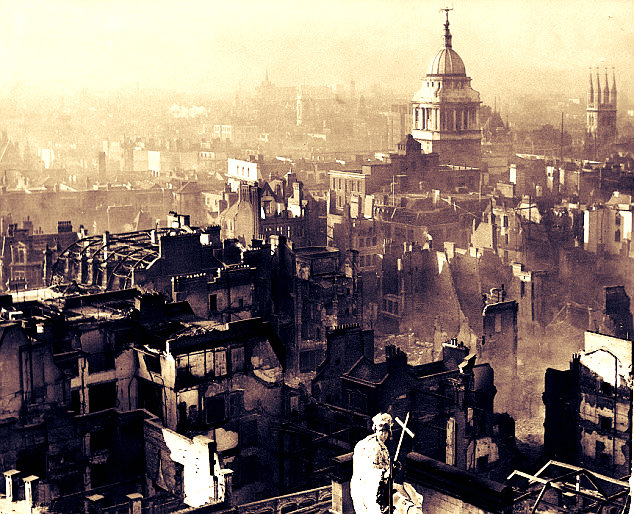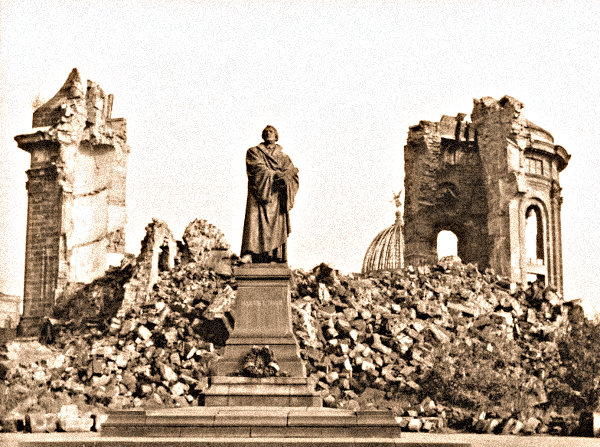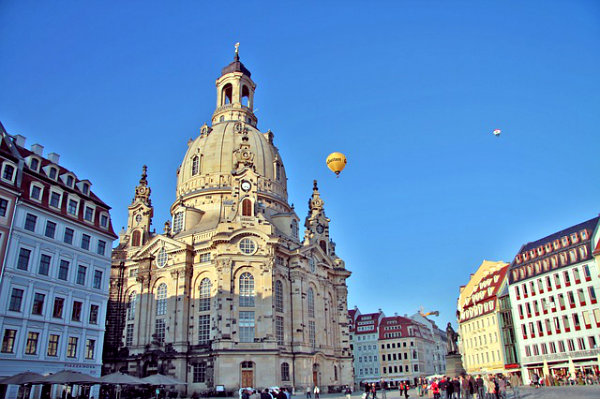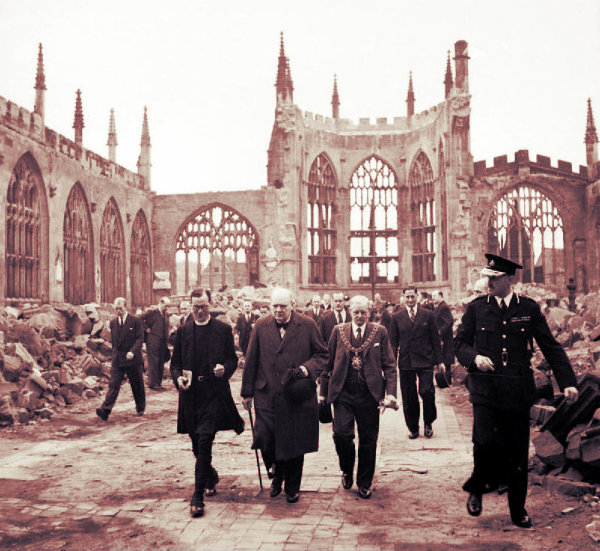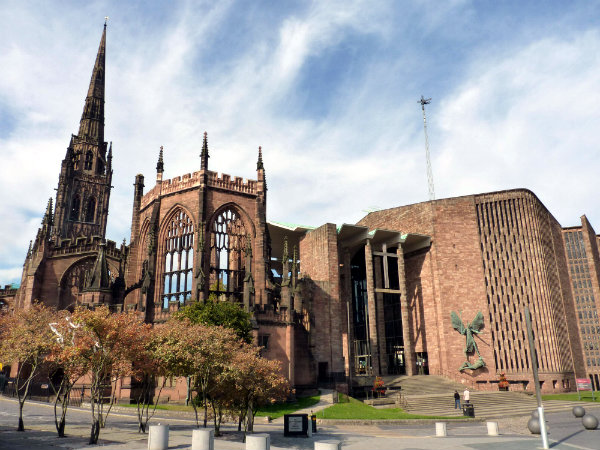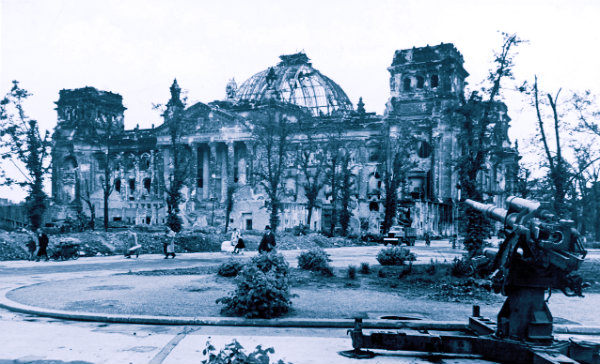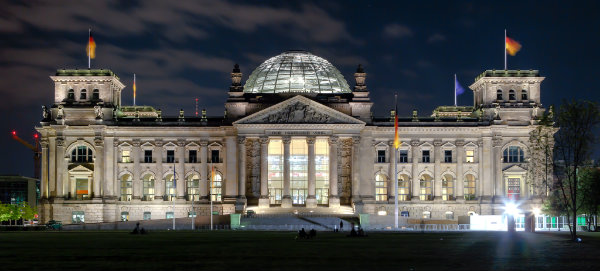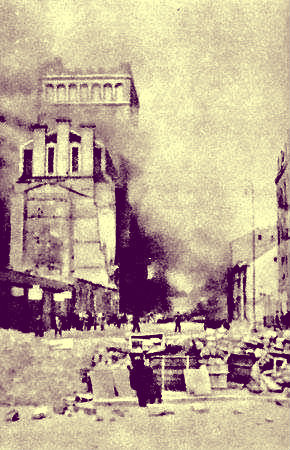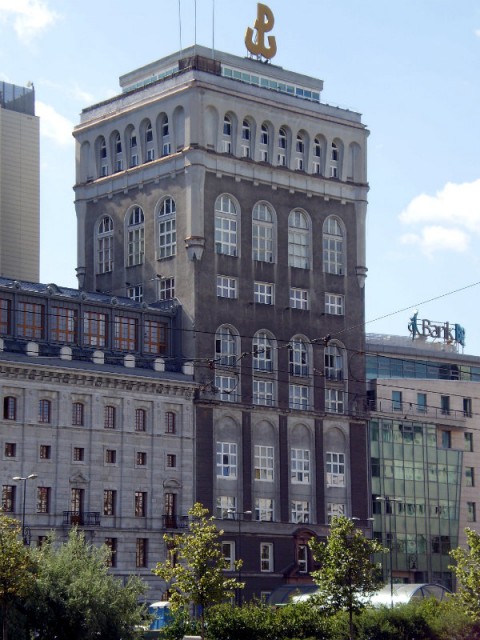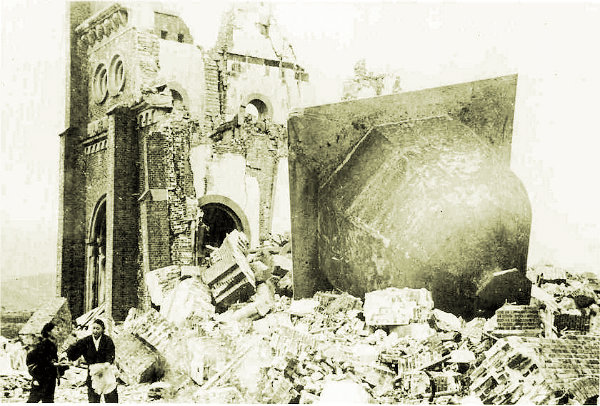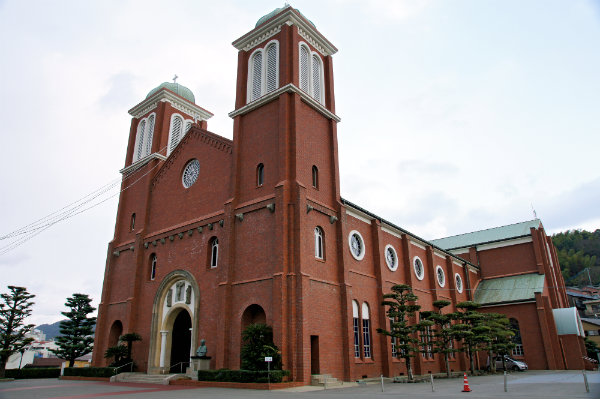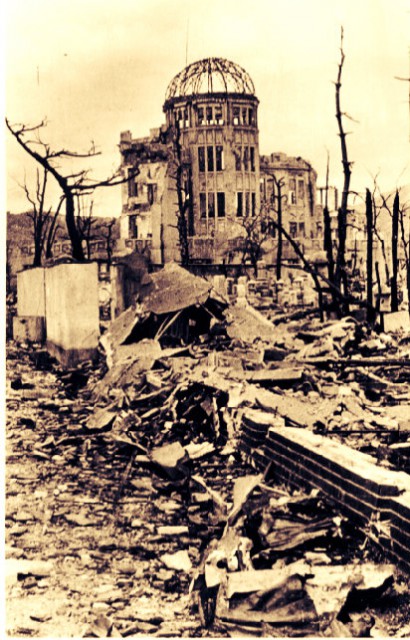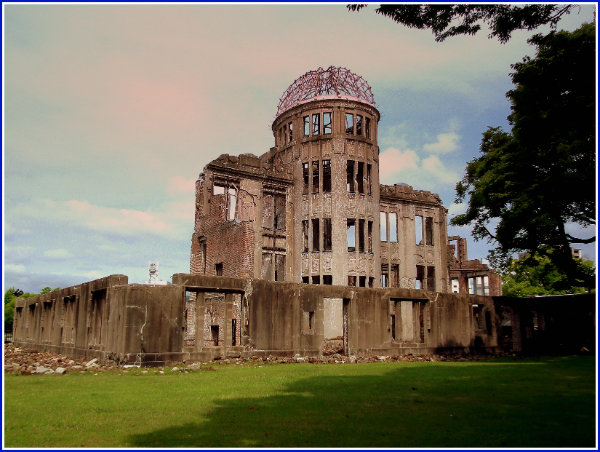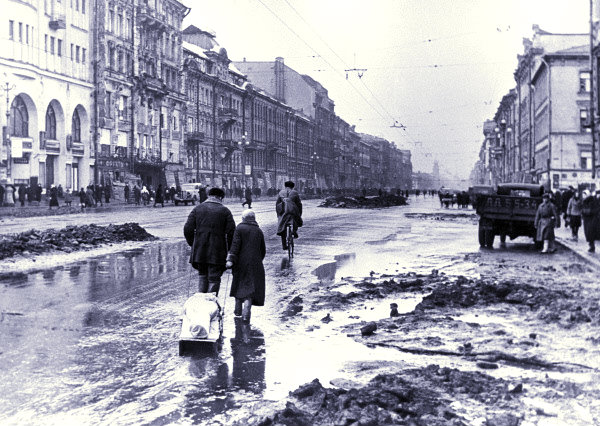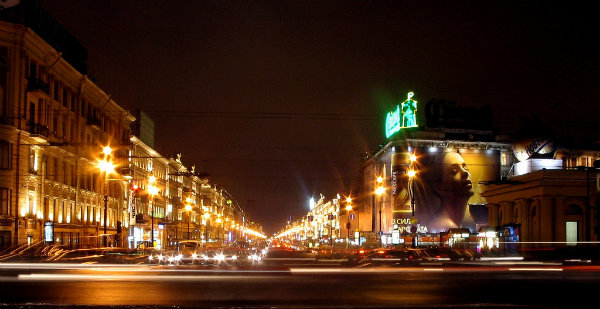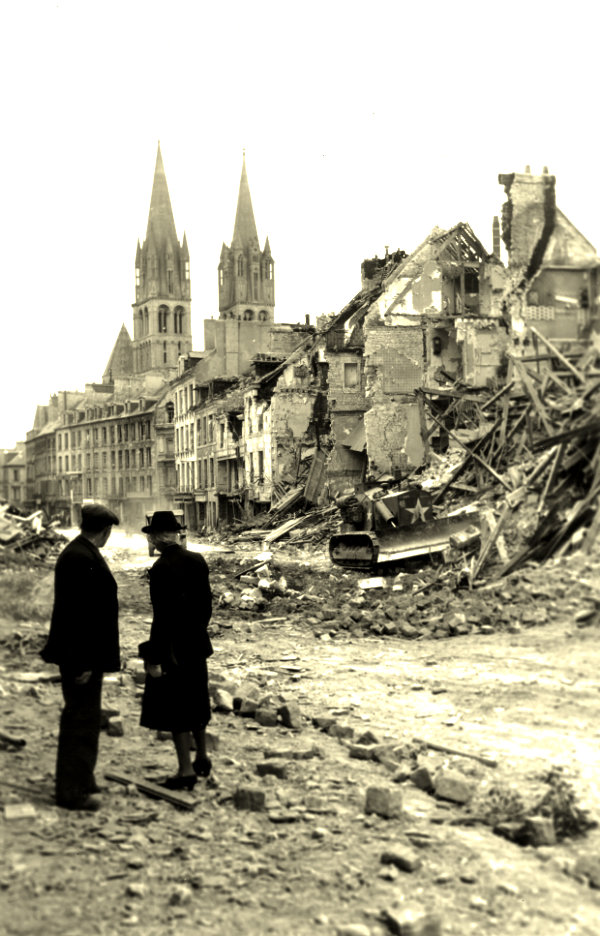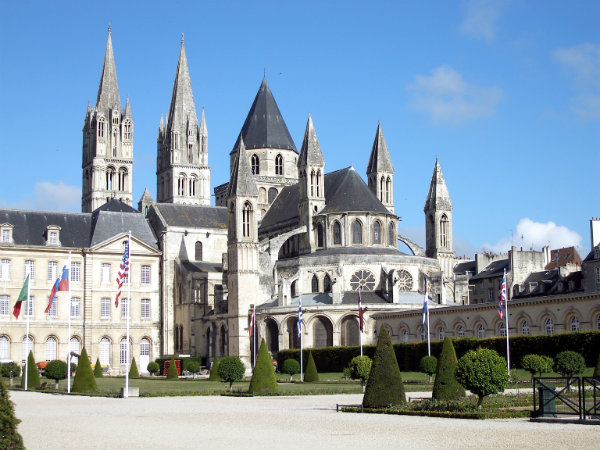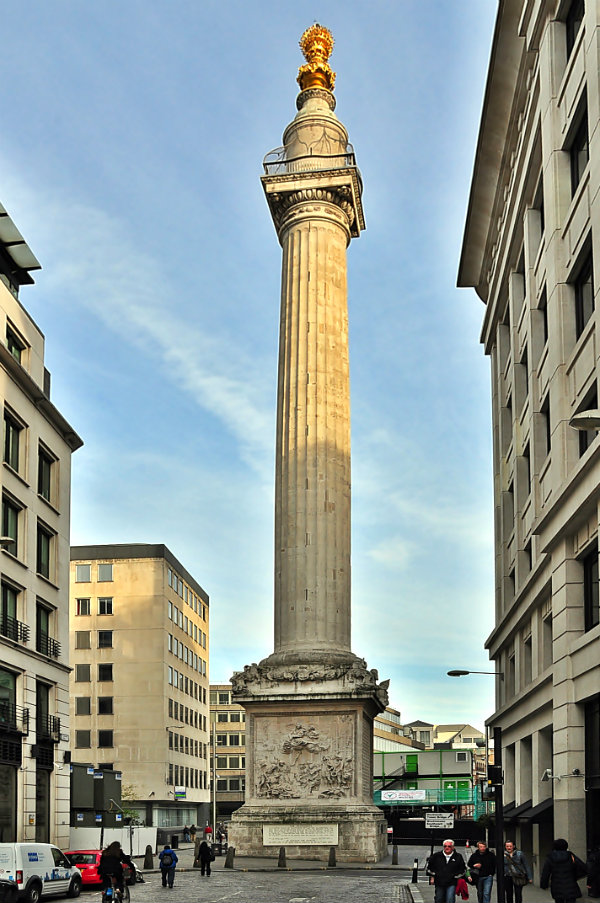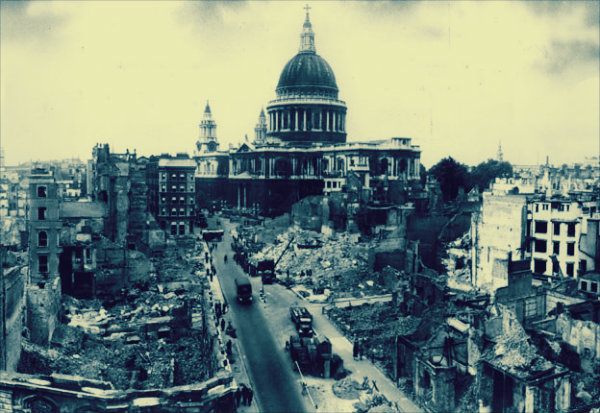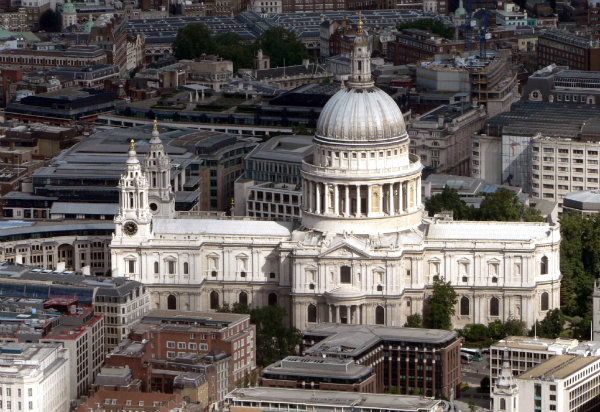In light of the recent commemoration of the 70th anniversary of the fire-bombing of Dresden, Germany – one of the most controversial passages of the Second World War, let us look at some of the beautiful landmarks destroyed by the bombs and shells of WWII only to rise from the ashes and restored back to their former glory.
Frauenkirche in Dresden, Germany
Before the fire-bombing, Dresden was, possibly, Germany’s most beautiful city with its Baroque center. However, when the Allies rained down bombs on the city, most of the city’s landmarks were destroyed included the Frauenkirche, a massive and impressive Baroque edifice built during the 18th century, 1743 to be exact.
Frauenkirche was able to withstand the bombings and even acted as a bomb shelter during the Allies’ fire-bombing of the city. But it collapsed due to the heat caused by the sustained explosions. Its dome fell on the 15th of February at exactly 10 in the morning.
It was not rebuilt right after the war ended. Its ruins were made as a memorial by the local leaders of then East Germany. However, that decision was changed after the reunification of East and West Germany — the Frauenkirche was restored. Its painstaking restoration went from 1992 to 2005.
Now, the big-domed church is at the heart of the city, back to its grand impressive state and known for its acoustics and organ recitals.
St Michael’s Cathedral of Coventry, UK
Coventry was one of the UK locations which suffered greatly during the Blitz, most specifically on November of 1940. On this unfortunate time, 515 German Luftwaffe bombers assaulted the Midlands city causing many of its landmarks to topple down to ashes including St. Michael’s Cathedral, a Gothic church built during the 14th-century.
Only the Gothic church’s spire and tower survived the German attack that time, which ironically was named Operation Mondscheinsonate [Moonlight Sonata].
The damage the cathedral sustained was too great to have it restored. So, the old edifice was left in ruins, a memorial to the Second World War called the Garden of Remembrance, and a new building was built adjacent to it.
The new St. Michael’s Cathedral was built from 1956 to 1962 with the Queen herself laying the building’s foundation stone. The current cathedral has not lived to everyone’s tastes due to its modern architectural structure but it has become one of the current key landmarks of Coventry while the old ruined shell makes for an intriguing complement.
The Reichstag in Berlin, Germany
The Reichstag is one of Germany’s prime landmarks.This historical building was constructed to house the German Empire’s Imperial Diet and it did just that from 1894 to 1933.
However, it was greatly damaged during the pre-WWII years and not through the hands of the Allies. It fell victim to an arson attack on February 27, 1933. The exact cause of the fire was not pinpointed though historians strongly believe it was Hitler, who had become the country’s Chancellor a month earlier, who did that. After all, he did use the blaze to justify the suppression of civil liberties amidst talks about communist plots within Germany.
The edifice sustained further damages during the Second World War. And like the Frauenkirche, it had to wait for the reunification of the East and the West Germany for it to be restored. The Reichstag had a role during the two halves’ reunification on October of 1990 and its full restoration process went on from 1992 to 1999.
The impressive glass dome which can be seen inside the current Reichstag edifice was designed by Norman Foster.
PAST Building in Warsaw, Poland
PAST or the Polska Akcyjna Spółka Telefoniczna [Polish Telephone Joint-stock Company] was a telephone operator in Poland operational between the years of the First World War up to the Second World War. What made the company notable was its majestic office which, during the time it was built, was the tallest and the first skyscraper within the Russian empire. It was also Warsaw’s tallest structure. Adding to its being legendary was its role during the Warsaw Uprising in 1944.
When the Germans occupied Poland, PAST became the General Government’s regional telephone center. During the Warsaw Uprising, the edifice was captured by the Polish resistance fighters, that was, after twenty days of bloody, hard battle. The building sustained severe damages because of that.
The PAST Building was recreated right after the end of the Second World War, though, in a simplified form. It was because a smaller budget was entailed with the structure’s recreation process as Poland was coming to terms with living behind the Iron Curtain in those times. It was, then, nationalized by the Polish government after it was done.
Currently, the PAST Building is still standing at the heart of Warsaw, one of the city’s and the country’s history-rich landmarks.
Urakami Cathedral in Nagasaki, Japan
The Urakami Cathedral is an quaint red-bricked Catholic church in Nagasaki, Japan built in 1895 after the rescinding of a long-standing ban against Christianity. But it was only completed in 1925 and, upon its completion, was East Asia’s biggest Catholic church.
However, when the atomic bomb was dropped at Nagasaki on August 9, 1945, it detonated in Urakami exactly just five hundred meters away from the cathedral. Because of the near proximity, the whole edifice along with those inside it were totally obliterated.
As the edifice was completely destroyed, a replacement was constructed in 1959 after a very heated debate between the government and the Nagasaki Christians. The former had wanted to preserve the location where the church was as a heritage site but the latter insisted that building the new cathedral on top of the original site of the old one would be a good symbol of the persecuted and their sufferings. In the end, the Nagasaki Christians got what they wanted.
The current Urakami Cathedral has a column of the red bricks which came from the original structure — this serves as part of Nagasaki’s peace memorial. Aside from that, a burnt statue of the Virgin Mary can be found behind the altar of the new cathedral’s side chapel. The original belfry also is also left where it landed during the bombing, on the left-hand side of the rebuilt cathedral.
The Urakami Cathedral not only serves as one of Nagasaki’s and the country’s beautiful landmarks, it also serves as a reminder of a horrendous time that was the dropping of the nuclear bomb in Nagasaki during WWII.
Atomic Bomb Dome in Hiroshima, Japan
Completed in April 1915 and designed by Czech architect Jan Letzel, the Atomic Bomb Dome was originally named the Hiroshima Prefectural Commercial Exhibition. From there, it underwent two more name changes — the Hiroshima Prefectural Products Exhibition Hall in 1921 and the Hiroshima Prefectural Industrial Promotion Hall in 1933. Its primary use was as an arts and education display hall.
When the Allies dropped the nuclear bomb in Hiroshima on August 6, 1945, the edifice found itself at the hypocenter of the ensuing explosion. Amazingly, not all of it was destroyed and what remained of the edifice was the only structure top remain standing at the site after the attack.
The Atomic Bomb Dome was left as it was, a focal point of the Hiroshima Peace Memorial Park. It stands as one of the country’s most evocative landmarks about WWII and the nuclear bombing of Japan. UNESCO made it a World Heritage Site in 1996.
Nevsky Prospekt in St. Petersburg, Russia
St. Petersburg was then known during the Second World War as Leningrad and was the site of one of the most horrendous episodes of the war — the Siege of Leningrad which went on from from September 8, 1941 to January 27, 1944 lasting for a little less than nine hundred days. It went down history as one of the longest and most destructive blockades. It is also said to be the costliest in terms of casualties.
Nevsky Prospekt is the main road of the city of Leningrad and during the city’s blockade, it was badly damaged, reduced to a derelict and rugged state, a bleak strip lined with empty shops.
Seven decades after this horrible event, Nevsky Prospekt has evolved into St. Petersburg’s most celebrated avenue and is now lined with boutiques and fashion houses selling expensive and branded items. The Kazan Cathedral, which greatly resembles Rome’s St. Peter’s Basilica, can also be found here.
Surely, it has become one of the most sought-after landmarks of Russia in the current times.
Rue de Bayeux in Caen, France
Like Nevsky Prospekt, Rue de Bayeux is a street but in the French city of Caen. During the Battle for Caen, the fight by the Allies and the Germans for control of the strategic city of Caen, the Rue was laid to ruins. Rue de Bayeux, which was a medieval masterpiece, was left desolate after the air raids of the Allies and the bitter fighting in the street.
Years on, the Bayeux, which is one of France’s landmarks, was rebuilt. The massive Abbaye aux Hommes, founded by William the Conqueror way back in 1063, miraculously survived the raids and the fights during the Second World War. Today, it stands, proud testament to Bayeux’s rich historic past.
The Monument to the Great Fire of London in London, UK
It was built in memory of the Great Fire of London in 1666 and amazingly, it survived during the second time. This 62-meter tall simple monument to the Great Fire stands exactly 62 meters from the spot where the blaze began in Pudding Lane. The Monument was designed and built by one of Britain’s most distinguished architects, Christopher Wren, from 1671 to 1677.
It, fortunately, survived German bombing attacks during the Second World War’s Blitz.
Currently, The Monument is one of London’s landmarks sought after by tourists. It underwent restoration between July of 2007 and February of 2009.
St. Paul’s Cathedral in London, UK
This iconic Anglican cathedral designed by Christopher Wren was built between 1668 to 1711 and is, arguably, London’s greatest architectural survivors during the Blitz in the Second World War.
Because it stood proud and strong despite being struck twice – on October 1940 and April 1941 – many photographs were taken of it and it became the poster image of British resistance as WWII became more expiatory.
To date, the cathedral holds a dominant place among London’s landmarks and one of Britain’s most recognizable structures.
